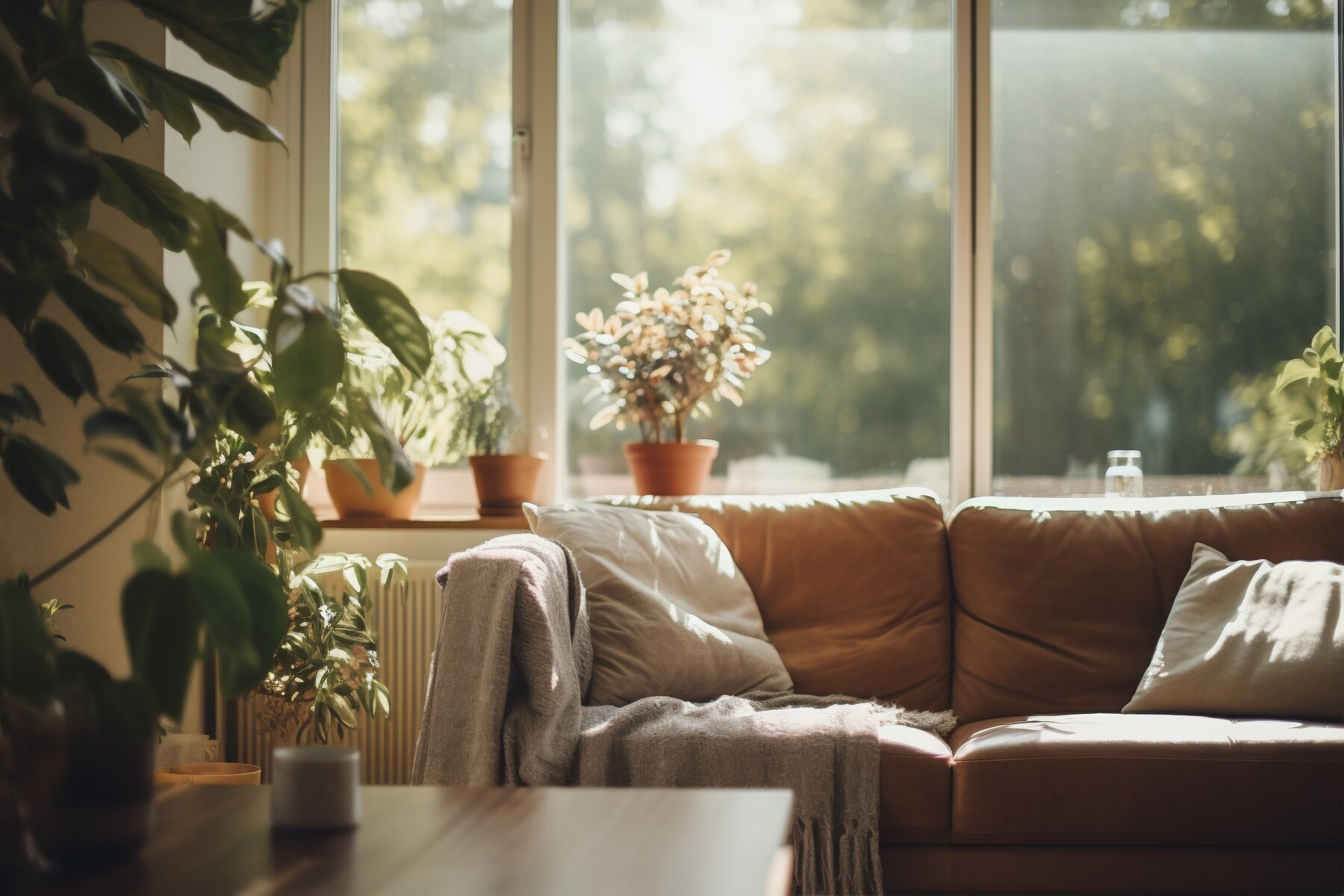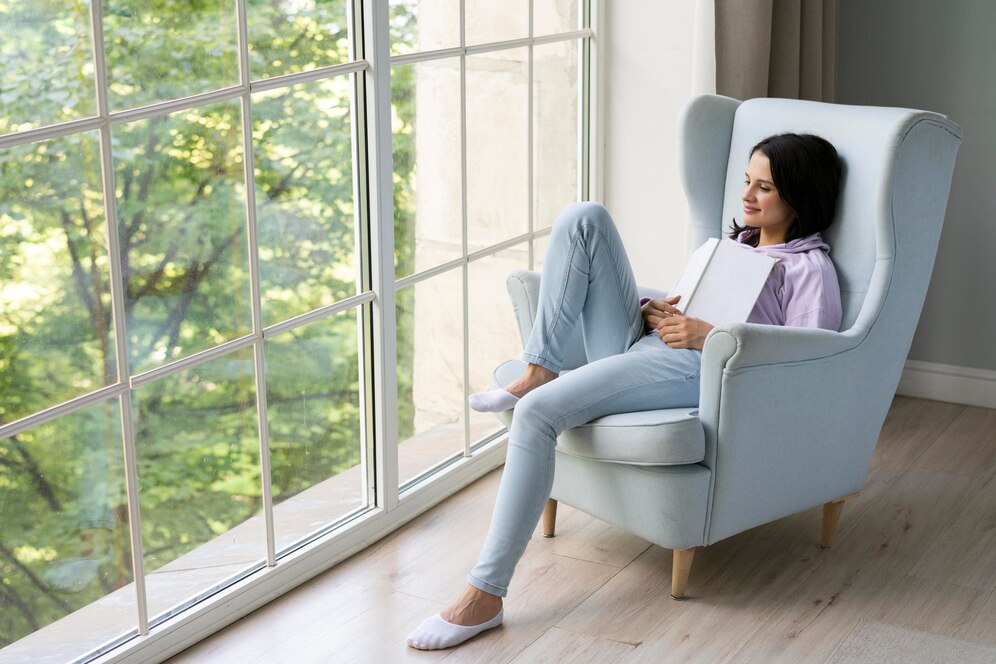
Maximizing Natural Light in Your Home
Natural light has a profound impact on the atmosphere of a home. It creates a warm, inviting space, enhances productivity, and even contributes to better mental and physical health. Whether you live in a compact city apartment or a spacious suburban house, learning how to increase natural light can transform your living space into a bright and airy interior. This guide will explore effective home lighting design techniques to help you make the most of natural illumination in your home.

Why Natural Light Matters
Before diving into practical ways to increase natural light, it’s important to understand why natural lighting is so beneficial.
1. Enhances Mood and Well-Being
Exposure to sunlight is known to boost serotonin levels, which helps improve mood and energy. Maximising natural light in your home can make spaces feel more open and cheerful, reducing stress and fatigue.
2. Reduces Energy Costs
By harnessing daylight, you can cut down on artificial lighting use during the day, reducing electricity bills. A well-thought-out home lighting design can ensure a home remains energy-efficient while feeling warm and well-lit.
3. Improves Interior Aesthetics
Natural light enhances the appearance of your interior decor, making colours appear more vibrant and creating a seamless connection between indoor and outdoor spaces. Bright and airy interiors often feel more expansive and luxurious, even in smaller homes.
4. Supports Better Sleep Cycles
Exposure to natural light, particularly in the morning, helps regulate the body’s circadian rhythm, leading to better sleep quality. Homes with abundant daylight exposure can contribute to a healthier lifestyle.
Home Lighting Design: Making the Most of Natural Light
To optimise natural light, a strategic approach is necessary. Here are some tried-and-tested home lighting design techniques to help you brighten up your living spaces.
1. Maximise Window Size and Placement
- Large windows, floor-to-ceiling glass doors, and skylights are excellent ways to increase natural light.
- If you’re renovating, consider expanding existing windows or installing additional openings.
- Choose bay or picture windows to let in more sunlight while enhancing the aesthetic appeal of your home.
2. Use Lighter Colours for Walls and Ceilings
- Light colours, such as white, cream, and soft pastels, reflect light rather than absorb it.
- Matte or satin paint finishes help bounce light around the room, increasing the brightness of your space.
- Avoid dark or heavily saturated colours in rooms with limited sunlight.
3. Install Reflective Surfaces
- Mirrors are one of the most effective ways to increase natural light in a room. Position them opposite windows to reflect sunlight into darker corners.
- Glossy or polished surfaces, such as glass furniture, high-gloss tiles, and metallic fixtures, can amplify the effect of natural light.
4. Choose Light, Sheer Window Treatments
- Thick, dark curtains block sunlight and make a space feel smaller. Opt for sheer or lightweight fabrics like linen or cotton to maintain privacy while letting in light.
- Roman shades or adjustable blinds can help control the amount of light entering while keeping the room bright.
5. Declutter and Use Minimalist Decor
- A clutter-free space allows light to travel more freely.
- Choose sleek, modern furniture with clean lines to create an open and bright and airy interior.
- Avoid heavy or oversized furniture that can block natural light pathways.
6. Opt for Glass Doors and Partitions
- Replacing solid doors with glass-paneled alternatives allows light to flow from one room to another.
- If privacy is a concern, frosted or tinted glass doors can maintain separation while still allowing natural light penetration.
- Open shelving and see-through room dividers can also help maintain an open, illuminated feel.
7. Use Skylights and Sun Tunnels
- Skylights are an excellent way to bring in daylight, particularly in spaces where windows aren’t an option.
- Sun tunnels (or light tubes) are cost-effective solutions for adding natural light to interior rooms or corridors with limited external wall space.

Increasing Natural Light in Specific Rooms
Different areas of the home require unique strategies to increase natural light effectively.
1. Living Room
- Arrange seating areas near windows to take full advantage of daylight.
- Choose light-coloured upholstery to complement a bright and airy interior.
- Keep window sills clear to prevent obstructions to incoming light.
2. Kitchen
- If possible, install a skylight or large windows above the sink.
- Use open shelving instead of upper cabinets to maintain an open feel.
- Reflective countertops, such as quartz or polished granite, enhance natural light distribution.
3. Bedroom
- Place your bed near a natural light source to benefit from morning sunlight.
- Opt for light-coloured bedding and curtains.
- Avoid large, dark furniture pieces that can absorb light and make the room feel smaller.
4. Bathroom
- Use frosted glass windows or skylights to maintain privacy while allowing sunlight in.
- Incorporate reflective tiles and glass shower doors to bounce light around.
- Wall-mounted mirrors can further amplify brightness in small bathrooms.
Artificial Lighting to Complement Natural Light
Even with abundant daylight, artificial lighting plays a crucial role in maintaining a well-lit home after sunset. A well-balanced home lighting design incorporates different types of lighting to enhance both function and ambiance.
1. Layered Lighting Approach
- Ambient lighting: General lighting sources like ceiling fixtures or chandeliers provide overall illumination.
- Task lighting: Targeted lights, such as pendant lights over a kitchen island or reading lamps by a sofa, help enhance functionality.
- Accent lighting: Wall sconces, LED strips, and recessed lights highlight architectural features and create visual depth.
2. Smart Lighting Solutions
- Consider using smart LED bulbs that adjust brightness levels based on natural light availability.
- Install dimmers and motion sensors to optimise energy efficiency.
- Tunable white light fixtures can mimic daylight patterns to support a healthy circadian rhythm.
3. Light Temperature and Placement
- Warmer light (2700K-3000K) is ideal for bedrooms and living rooms to create a cosy atmosphere.
- Cooler light (4000K-5000K) is best for workspaces, kitchens, and bathrooms where clarity is needed.
- Positioning artificial lights near reflective surfaces can help distribute light more effectively throughout a room.

Transform Your Home with Natural Light
Maximising natural light is one of the most effective ways to enhance your home’s aesthetic, energy efficiency, and overall comfort. By incorporating strategic home lighting design techniques—such as optimising window placements, choosing reflective surfaces, and complementing daylight with smart artificial lighting—you can create bright and airy interiors that feel welcoming and uplifting.
Are you planning a lighting makeover? Which of these tips do you find most useful? Share your thoughts in the comments below!